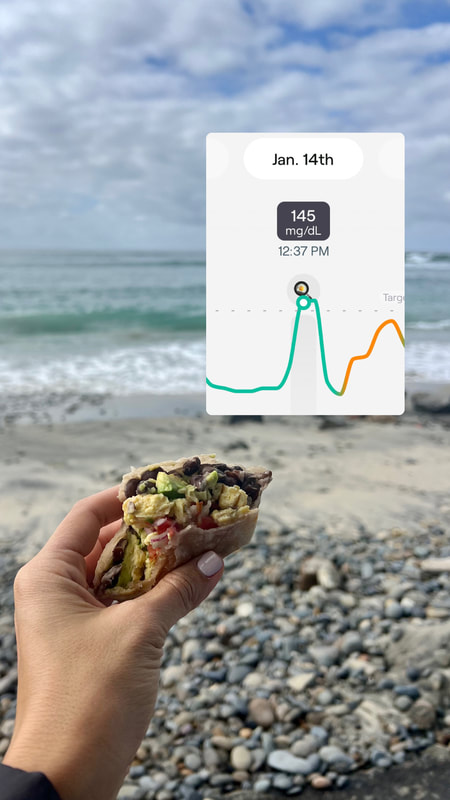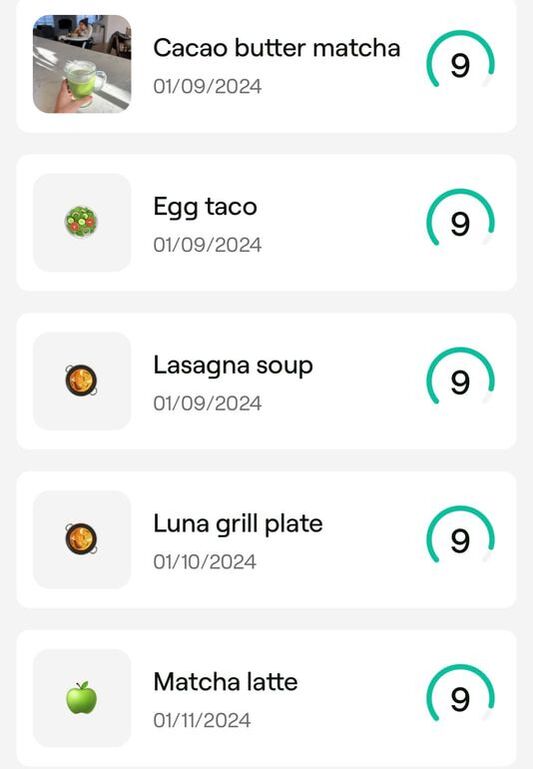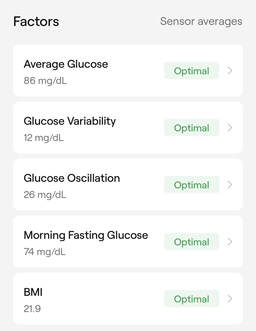|
1/29/2024 What I Learned From Tracking my Blood Sugar with VeriI've always been interested in tracking my blood sugar and learning how my body responds to certain foods. Of course, I have a pretty good idea of what foods would cause a blood sugar spike, but our bodies are so individual, and while someone might experience a larger spike from, let's say sweet potatoes, another person may see a spike from rice, or fruit, or bread. So since I'm already making the effort to eat a well balanced diet, I wanted to take it a step further and know exactly what the best choices are for my own body. I tracked everything through the Veri app, which is the continuous glucose monitor (CGM) and also the program that gives all the data and guidance to help stabilize your blood sugar levels and feel your best. Let's dive into some FAQ and then everything I learned from my experience wearing my Veri CGM. I shared a story on instagram when I was applying my Veri CGM and I was flooded with DMs from people interested in why I was doing it, wondering if it hurt, and asking if I notice it throughout the day. So first off, why wear a CGM? Struggling with metabolic health and blood sugar imbalances is a root cause of so many symptoms, illnesses, inflammation, and hormone issues. Many of us may think we're eating a healthy diet and may not even realize we're riding the blood sugar rollercoaster due to certain foods and meals we're eating, so wearing a CGM is a great way to educate ourselves so we are empowered to make the best choices we can for our longterm health. Learning how to balance blood sugar can help with weight management, energy level, cravings, and reversing insulin resistance. Veri has a great blog post all about the benefits of balancing your blood sugar here -- a worthwhile read! Does it hurt to apply it? Do you notice it throughout the day? Nope! Just follow the step-by-step instructions on the app and you can't mess it up. I didn't feel any pain with the application process and once it was in, I barely noticed it! I wore it every day for every activity -- working out, showering, chasing the kids, etc. The only time I noticed it was when I was carrying my toddler and he kept trying to pinch it on my arm. Otherwise, all good! What I LearnedGoing into this, I assumed I would see the biggest blood sugar spikes from desserts. I have a sweet tooth and never really miss a day without a little treat. I always try to choose desserts that are made with quality ingredients and relatively low in sugar, but at the same time, sugar is sugar, and I was curious to see how it would all impact me. Interestingly, my typical nightly treat of Hu Kitchen chocolate really didn't spike my blood sugar too high (unless I paired it with other sweets). What really did spike it, probably my highest spike since I started tracking was a gluten-free breakfast burrito on a cassava flour tortilla! Here I thought with the protein from the eggs and the fat from the avocado, I wouldn't see much of a spike, but I have found that my body is really sensitive to cassava products. Will I still eat them? Yes! But now I'll do so more mindfully and work to plan out my other meals that day around it. Another thing that is helpful after a meal like that is taking a walk and getting some activity in to help smooth out that curve. Something else that can be helpful is starting the meal with some fiber first -- so maybe a good option would be to have veggies or a side salad or a chia pudding before diving into the breakfast burrito. Below are a few other insights from my Veri app: On the left, you'll see some of my best-scoring meals. All of these have either protein or fat to help balance them out. Even a meal with more carbs, like the lasagna soup, which has noodles in it, still scored a 9 based on how my blood sugar responded, and that's because that meal is loaded up with protein, fiber, and fat. On the right, you'll see my worst scoring meals / snacks. It's not a surprise to see mostly sweets and pastries on there. I love those Siete Foods cookies, but too many, plus some chocolate will definitely lead to a spike (not a surprise). This doesn't mean I'll never buy them again, but I will watch my portions with them and probably choose either the cookies or the chocolate vs. doubling up. Low Blood Sugar at Night Another thing I learned was about my sleep! At first, I was seeing very concerning drops in blood sugar while I was sleeping. I panicked, and then soon learned that this can happen from sleeping on your sensor. Phew! But once I was more aware and not sleeping on that side, it was still relatively low. So I started taking a supplement called Daily Basics, which contains coconut milk powder (fat) and inositol, which supports blood sugar balance, every night mixed in with my herbal tea. I noticed a big difference from taking it, and saw that I was averaging around 80-90 mg/dL each night which was a big improvement. Wearing my CGM was such a valuable learning experience and it's a tool that I'll definitely lean on in the future, especially if I've gotten out of my routine and need to take a closer look at what's happening with my blood sugar. I highly recommend giving it a try and seeing how your body responds to your favorite foods so you can be in control of your health and start feeling your best!
I'm really excited to share a $30 discount for Veri so you can try it out -- head to this link and use code VSM-WEEKNIGHTBITE at checkout.
0 Comments
Your comment will be posted after it is approved.
Leave a Reply. |
CATEGORIESPOPULAR POSTSJuly 28th, 2016Almond Milk Matcha LattesJune 23, 2017Almond Butter Cup SmoothieABOUT LINDSAYLindsay is a Holistic Nutritionist who lives for a great meal, a beautiful farmers market, daily matcha lattes, and homemade chocolate chip cookies. Weeknight Bite is Lindsay's happy place where her nutrition practice, simple recipes, and wellness tips come together to inspire you to live a healthy, balanced life.
|
















